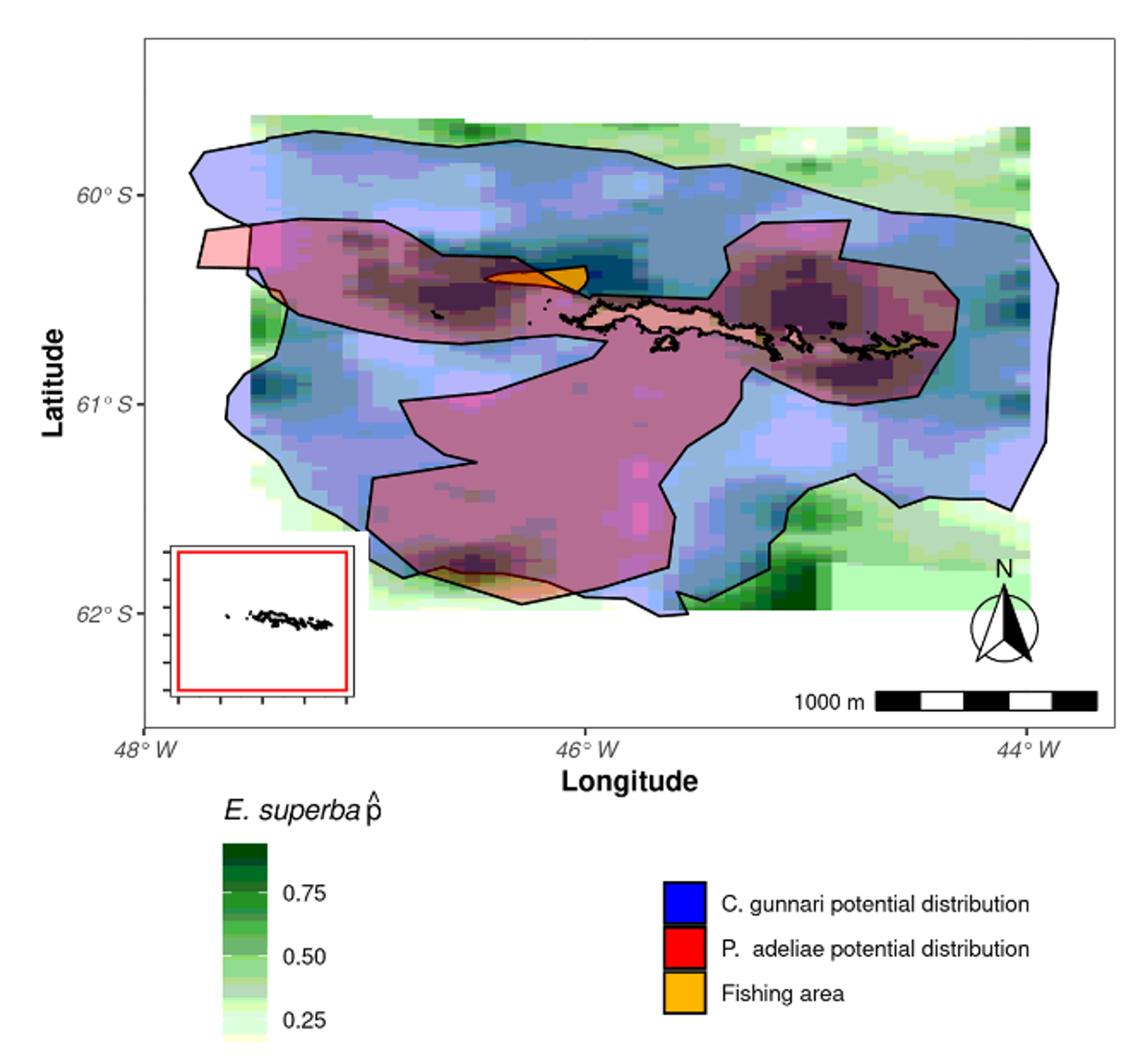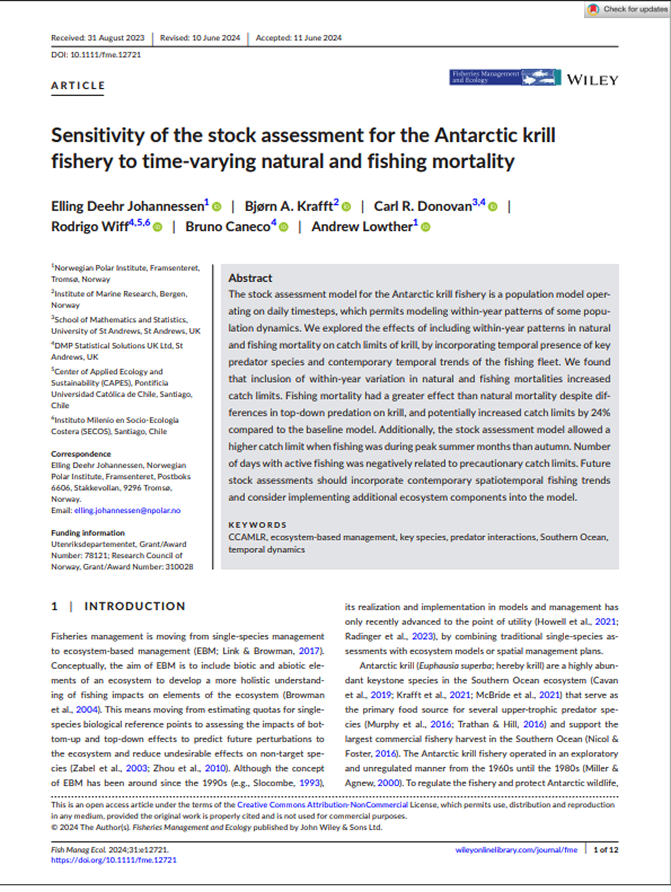Antarctic ecosystem
Fisheries management
Biomass
Krill (Euphausia superba)
Consumption of Antarctic krill Euphausia superba by mackerel icefish, Champsocephalus gunnari off the South Orkney Islands: filling an information gap in the current ecosystem based management approach
Summary
This study calculated how much Antarctic krill is consumed by mackerel icefish around the South Orkney Islands under three different population scenarios. Current icefish populations (7,000 tonnes) consume only about 0.07% of available krill, while pre-fishing exploitation levels (140,000 tonnes) would consume approximately 1.4% of krill biomass. Individual fish consumption was estimated at 153.5 ± 77.9 grams per day. Both icefish species showed highest concentrations north of the islands with significant geographic overlap (Williamson overlap index = 7.22). Icefish distribution followed optimal foraging patterns in relation to krill presence, but population density patterns were not directly related to krill density. The study addresses an important knowledge gap in ecosystem-based fisheries management by measuring fish predation on krill, concluding that even fully recovered icefish populations would not significantly affect krill availability for other predators like Adélie penguins.

1
Map showing estimated probability of Antarctic krill presence (green shading), potential distribution area of mackerel icefish (depth range 0-1000 meters), and potential distribution of Adélie penguins (from Frolkina 2002) around the South Orkney Islands, Antarctica.Key Findings
1
Individual icefish consume an average of 153.5 ± 77.9 grams of krill per day (ranging from 22.7-267.5 grams depending on fish size). 2
Current fish populations (7,000 tonnes) consume only 0.07% of available krill in penguin feeding areas. 3
Historical pre-fishing populations (140,000 tonnes) would consume 1.4% of available krill biomass. 4
The two icefish species show high geographic overlap (Williamson overlap index = 7.22) north of the South Orkney Islands. 5
Icefish distribution follows optimal foraging patterns, but population density patterns are not directly linked to krill density. 6
Total summer krill consumption ranges from 3,249 tonnes (current populations) to 64,978 tonnes (historical populations). 7
Even at maximum historical abundance levels, icefish impact on krill availability for other predators would be minimal.

